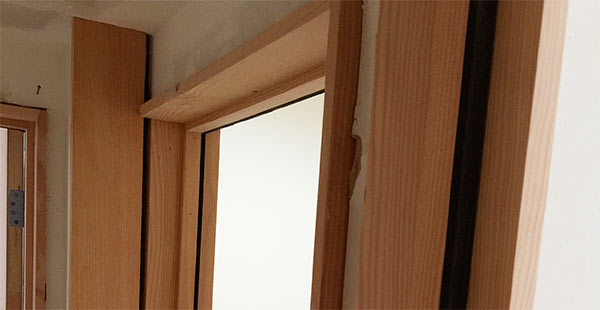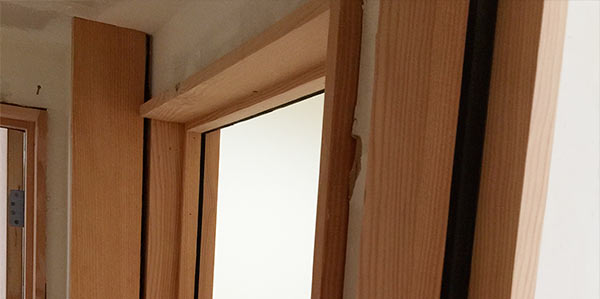Acoustic Treatment For Your Listening Room: Part II
A few posts back, I started talking about how important it is to have a good listening space. The acoustic characteristics of your listening environment are second only to the sound quality of the recordings that you play. The new studios in the AIX building are virtually complete. The wiring and mounting of the electrical panels and equipment rack are being completed as I write this. The door thresholds and other hardware are being installed too. And on Monday, the new tenants will begin to move in to their new home. The rooms are beautiful to look at and I’m confident that they will sound great as well.
In the previous article (click here to revisit it), I mentioned three things that affect the “sound” of a room. Today, I thought I would talk further about acoustic isolation.
Acoustic isolation prevents sounds from one location from leaking into another. In the world of studio design and construction, the idea is to create discrete rooms to create sounds — the “live room” or “iso booth” and another room to monitor those sounds — the “control room”. So the obvious question is whether home music listening rooms need to concern themselves with acoustic isolation? The answer is an emphatic yes.
If you’re listening to your favorite classical piece or pop record, you certainly don’t want to hear your neighbor’s HVAC system humming in the background, the rumble of an adjacent freeway, or the evening news leaking from the kitchen television. So what can you do to reduce acoustic leakage or sonically isolate your space? First, you have to restrict any air from moving from one room to the next. We all know that sound travels through the air. It doesn’t take a very large opening to ruin the acoustic isolation of an otherwise tightly sealed room. In the studios that I’ve designed and built, there are usually two walls on each side. There is an inner wall separated from an outer wall. The distance doesn’t have to be more than a few inches. But it’s very important that any structural members of one wall don’t come in contact with the other one.
The new AIX studios were constructed inside of a preexisting room. The new walls are completely freestanding. If they were attached to the exterior walls, any vibrations from the outside would be transmitted to the inside — especially low frequencies. And since there are three individual rooms where isolation is important, rubber barriers separate each room from each other. Take a look at the picture below. You’ll see the entrance to one of the rooms broken by black bands of softer rubber. In fact, all of the doorframes and drywall employs that same technique to keep sound from being heard from room to room.

Figure 1 – A view of a doorway with the isolating rubber used between the walls and on the seal of the door.
Home listening rooms should be sealed as tightly as possible from other spaces. And don’t forget about the HVAC system. Both the air conditioning incoming duct AND the air return should be isolated from the ducting that feeds other areas of the house. In studios, each room has its own AC unit, which makes the ducting easy. At home, you should use long runs of ducting that twist around a lot to minimize sound leaking into your listening room. And you want the ducting to be as large as possible — the bigger the diameter, the better. This will cut down on any noise generated by fast moving air. You want any moving air to literally fall into your space rather than being forced in.


AC ducts are obsolete, use mini split systems, for heating and cooling. No interconnecting duct work
You may know more about HVAC system design than I do but having built a few studios in this building, I can tell you there is still a lot of ducting in play. We do zone out different rooms with splits, however.
I have read a bit about acoustic room construction and damping, but nothing addressed ventilation, thank you. The separate air conditioners clear that up, but do the ISO booths also have separate feeds? If I understand right, you have 3 sound rooms with 3 ISO booths, some rest rooms, maybe a lounge and snack room, and interconnect hallways. Is that 6, 7, or more air conditioners? How do you baffle, or decouple the ventilation for all of these, and how effective is it?
Obviously, we don’t have individual HVAC units for everyone of the spaces. But there are three independent units in the new space. There is one for the main studio with splits and long baffled duct runs, one for the machine room and iso booths, and one for the common areas…including my office. The trick for isolating things is to have long runs that snake around the attic space.
‘So the obvious question is whether home music listening rooms need to concern themselves with acoustic isolation? The answer is an emphatic yes.’
This acoustic treatment could easily turn out to be the most expensive part of a home audio setup – sigh!
If you start with an existing room — as I assume most people do — then it can be expensive to properly isolate a room. I’ll be talking about diffusion and absorption in the next couple of posts. The more money put into creating a proper listening environment the better. Speakers and acoustic treatments are major priorities.
What is the RT as a function of frequency for each room and what were the design targets? What are the major resonance nodes, how high and how broad? How would you characterize the rooms as to liveness? What level of liveness is desirable for a recording studio of the type you use most?
These are not reverberant rooms by any stretch. There are bass traps in the corners, non-parallel walls, wood floors, and fabric covered acoustic panels on all walls and the ceiling. We’ll fine tune the RT using floor carpet tiles and adjust the frequency response with EQ when Bob Hodas tunes the rooms. In room this small, there is no reverb to speak of.
Thanks for the article and reponse on this Mark!
Would love to see the RT measurements on the rooms when you’re done!
I’ll be able to run some tests when Bob Hodas comes to tune the rooms.
What is the attenuation between adjacent rooms as a function of frequency?
Small rooms can be highly reverberant. Example, tiled bathrooms. Rooms can have excellent isolation and still be acoustically very life inside.